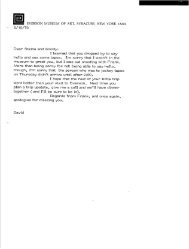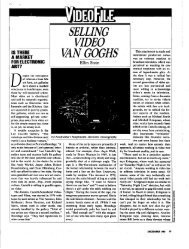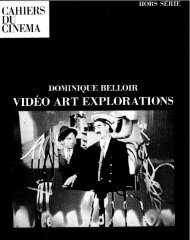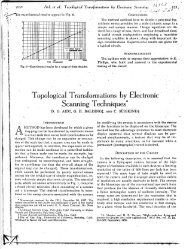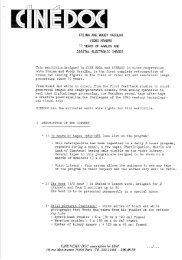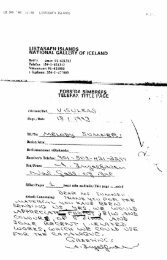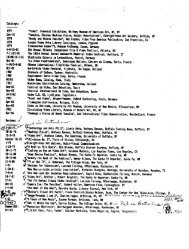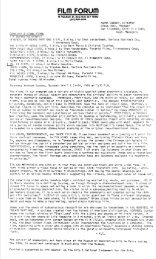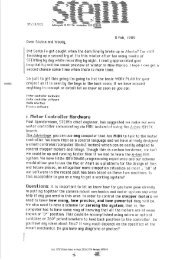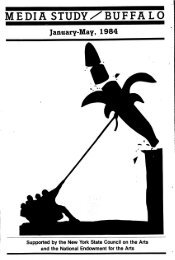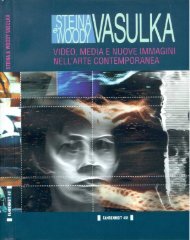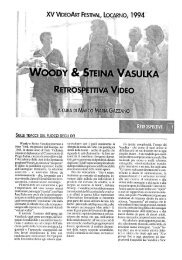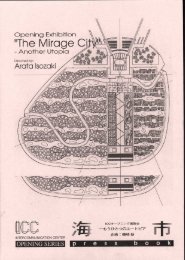Chapter 4: A HISTORY OF COMPUTER ANIMATION ... - Vasulka.org
Chapter 4: A HISTORY OF COMPUTER ANIMATION ... - Vasulka.org
Chapter 4: A HISTORY OF COMPUTER ANIMATION ... - Vasulka.org
Create successful ePaper yourself
Turn your PDF publications into a flip-book with our unique Google optimized e-Paper software.
<strong>Chapter</strong> 4 : A <strong>HISTORY</strong> <strong>OF</strong> <strong>COMPUTER</strong> <strong>ANIMATION</strong> 3/20/92 2 4<br />
computer," the Whitney films, like John's Catalogue (1961) and<br />
James's, Lapis (1963) represent a center position between the older<br />
abstract animators like Fishinger (sp?), and the still-to-emerge<br />
computerization (fig . 52) .<br />
Another pioneer from this analog yet automated era is Doug<br />
Trumbull, largely responsible for introducing, in the movie 2001<br />
(1968), a time lapse exposure technique called slit-scan in which<br />
light is smeared onto the individual frames of film (fig . 53) .<br />
52 . Analog computer animation . This image is made by successive<br />
rotation and multiple exposure of a single template, successive<br />
images are formed by local rotations and translations to the<br />
template itself . Color is via table lookup . From a descriptive point<br />
of view it is immaterial if the imaging aparatus is analogue with<br />
physical templates or digital with virtual templates .<br />
53 . Slit scan technique makes use of narrow line (the slit) which<br />
travels across the artwork or the recording medium (the scan) while<br />
the exposure is made . Physically the slit is actually a narrow<br />
opening cut into a piece of very thin metal . The regular camera<br />
shutter remains open while the slit is in motion, although it is<br />
closed while the film is advanced .<br />
In effect the slit functions like a focal plane shutter . If the<br />
camera and artwork (or prop) is held steady during the exposure scan<br />
then the newly recorded image looks normal and undistorted . But if<br />
the camera and/or the artwork is moving during the scan, something<br />
magical occures . For example, if the slit is a horizontal line<br />
progressing from the bottom of the screen to the top (A1), and the<br />
camera moves closer to the image while this is happening, then the<br />
resultanting image appears in tilted perspective, closer to the<br />
viewer at the top of the screen (A2) . The direction arrows<br />
superimposed throughout this figure indicate the direction and<br />
travel of the slit (in A1 this is the up arrow) and the effect of the<br />
camera zooming on the artwork (the two arrows from the larger<br />
rectangle to the smaller one) during the exposure of a single frame .<br />
The generation of successive frames requires changing a<br />
parameter on a frame by basis . For example, if the start position of<br />
the artwork is translated vertically (B1), while repeating the<br />
identical slit scan and zoom camera action employed for the first<br />
frame, the resultant image will seem to animate along the plane of<br />
the tilted perspective (B2) . A program for this might look like :<br />
Set initial position of artwork<br />
Repeat frames = 1 to 100



